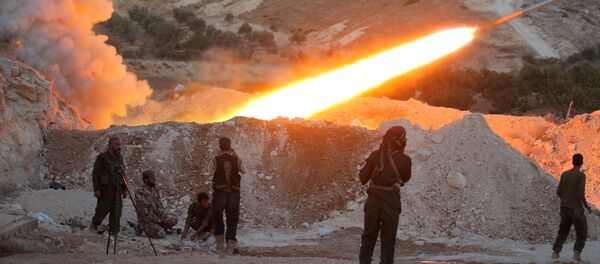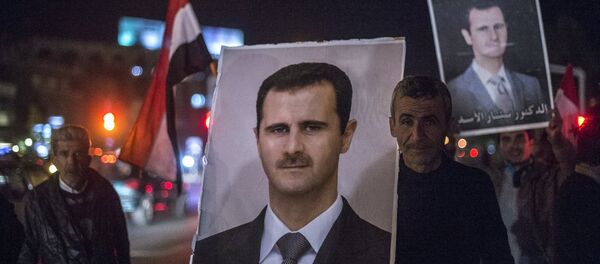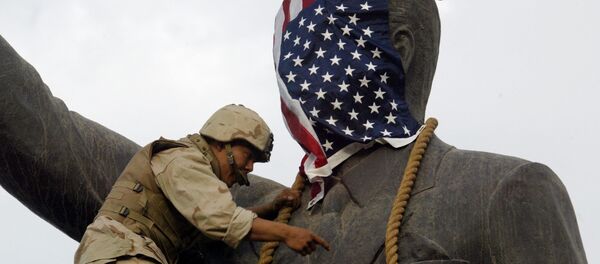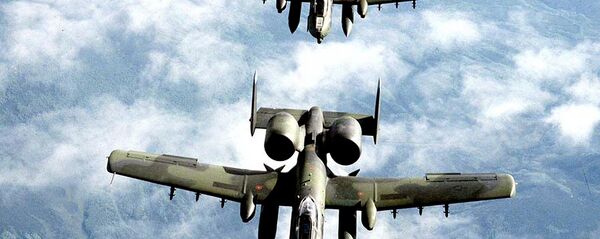Donald Trump's latest order restricting refugees from entering the US has prompted a heated debate in the mainstream media and a lot of confusion on the ground.
On Friday President Trump signed an executive order entitled "Protecting the Nation From Foreign Terrorist Entry Into the United States."
The order suspends the US refugee program for 120 days and specifically bans Syrian refugees until " sufficient changes have been made to the USRAP" (United States Refugee Admissions Program).
"I hereby proclaim that the entry of nationals of Syria as refugees is detrimental to the interests of the United States and thus suspend any such entry until such time as I have determined that sufficient changes have been made to the USRAP to ensure that admission of Syrian refugees is consistent with the national interest," the document reads.
Being put into effect on Friday night Trump's executive action has already sparked much controversy.
Citing sources at Cairo airport, Reuters reported Saturday that five Iraqi passengers and one Yemeni "were barred from boarding an EgyptAir flight from Cairo to New York."
The media outlet earlier wrote that two Iraqi men were detained on Friday night at New York's John F. Kennedy International Airport just hours Trump's order came into force. To add to the confusion, one of the two men is a "former US government worker and the other the husband of a former US security contractor."
Meanwhile, legally permanent US residents from the aforementioned Muslim states have also found themselves coming under scrutiny.
Gillian Christensen, acting Department of Homeland Security spokeswoman, announced Saturday that Trump's executive action that is temporarily barring people from seven Muslim-majority countries "will bar green card holders."
However, there is more to Trump's order than meets the eye.
Due to WikiLeaks disclosures it is no longer secret that the Obama administration played a substantial role in fanning the flames of unrest in Syria. The White House was well-aware that al-Qaeda in Iraq (AQI), the Muslim Brotherhood and Salafists have been the major driving force behind the Syrian insurgency since the beginning of the conflict in 2011.
In late 2016 ex-US president Barack Obama approved a massive Pentagon spending bill, known as the National Defense Authorization Act (NDAA) which eased restrictions on weapons transfers to Syrian opposition groups, despite the fact that some of them have been repeatedly spotted siding with al-Qaeda branches.
Meanwhile, the story of the US-backed Saudi coalition's bombardment of Yemen still remains largely neglected. However, it is well documented that Washington has helped Saudi Arabia to fight against the Yemeni Shiite minority from the very beginning of the conflict in 2015, providing military intelligence to Riyadh and refueling Saudi fighting jets.
Furthermore, the US foreign policy establishment has also had a hand in Sudan's secession back in the 1990s and in the early 2000s. Citing a Congressional Research Service report, Rebecca Hamilton of the Atlantic chronicled in 2011 that Washington threw its weight behind the southern rebels to undermine the country's government and eventually divide the state.
"The Somalia campaign is a blueprint for warfare that President Obama has embraced and will pass along to his successor. It is a model the United States now employs across the Middle East and North Africa — from Syria to Libya," The New York Times reported in October 2016.
Needless to say that Iran had repeatedly become the focus of Washington's attention. In 2013 America's Central Intelligence Agency (CIA) officially recognized the fact that it was behind the 1953 coup against Iran's democratically elected Prime Minister Mohammad Mosaddeq. Following the Iranian Revolution of 1979 the US imposed tough economic sanctions against the Middle Eastern country.
And that's just half the story.
Speaking to Radio Sputnik in early January, American peace activist Dr. Phyllis Bennis said that over the last year the US has dropped 26,171 bombs in seven countries — Syria, Iraq, Afghanistan, Libya, Yemen, Somalia, Pakistan. She warned that the US is steadily expanding its bombing campaign in the Middle East and Africa.
However, according to the peace activist this strategy does not work.
"It does not work for the US in Syria, Iraq, Afghanistan, Libya, Yemen, Somalia, Pakistan. It does not work because you can't bomb terrorism out of existence," she stressed.
There is some black irony in the fact that President Trump banned the refugees from the states struck and exhausted by Washington's decades-long assertive foreign policy and regime change practice.
On Saturday thousands of academics, including 11 Nobel Laureates, signed a petition against Trump's executive action suspending the entry to the US of Syrian refugees and nationals from several other countries in the Middle East and North Africa.








